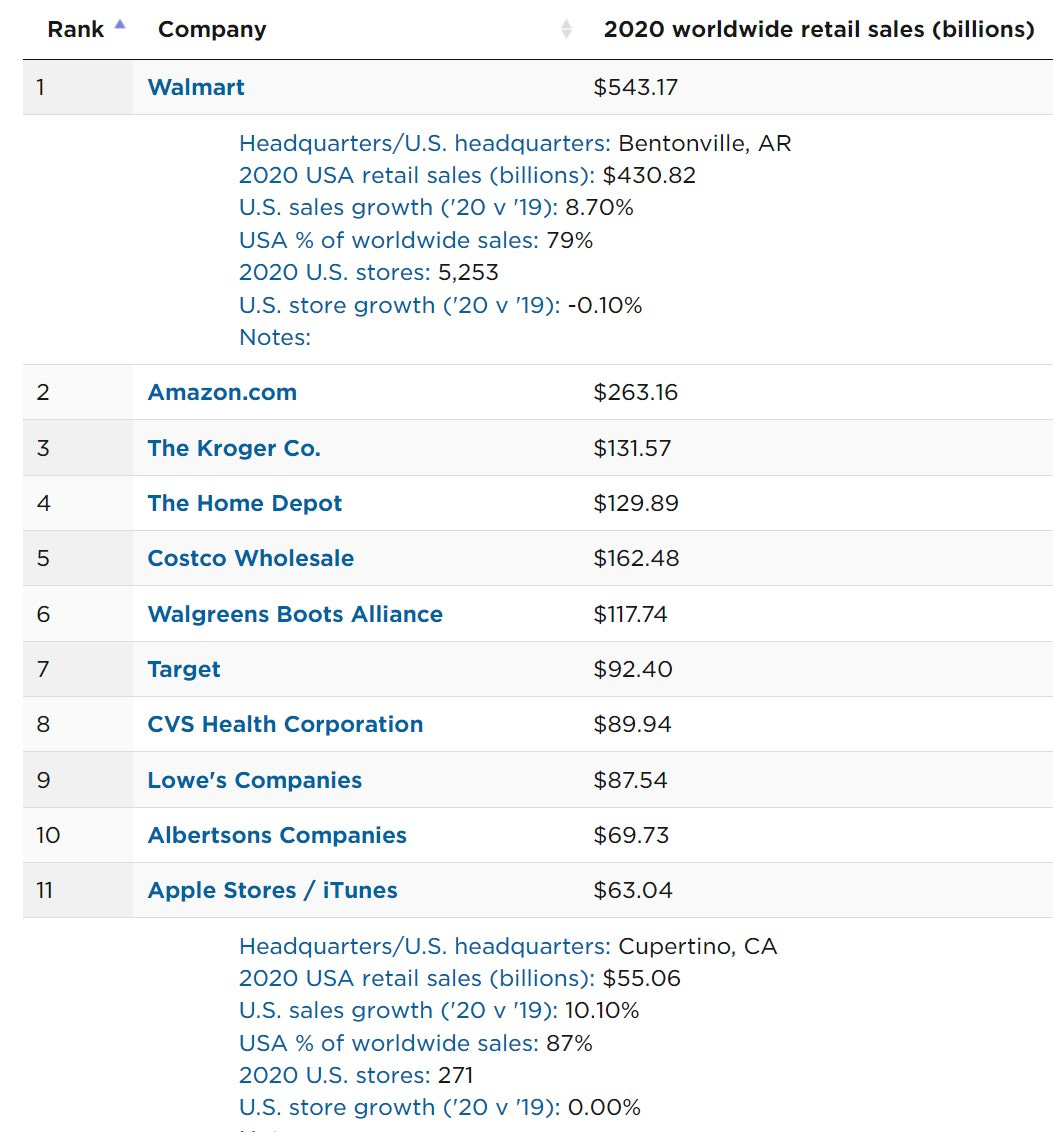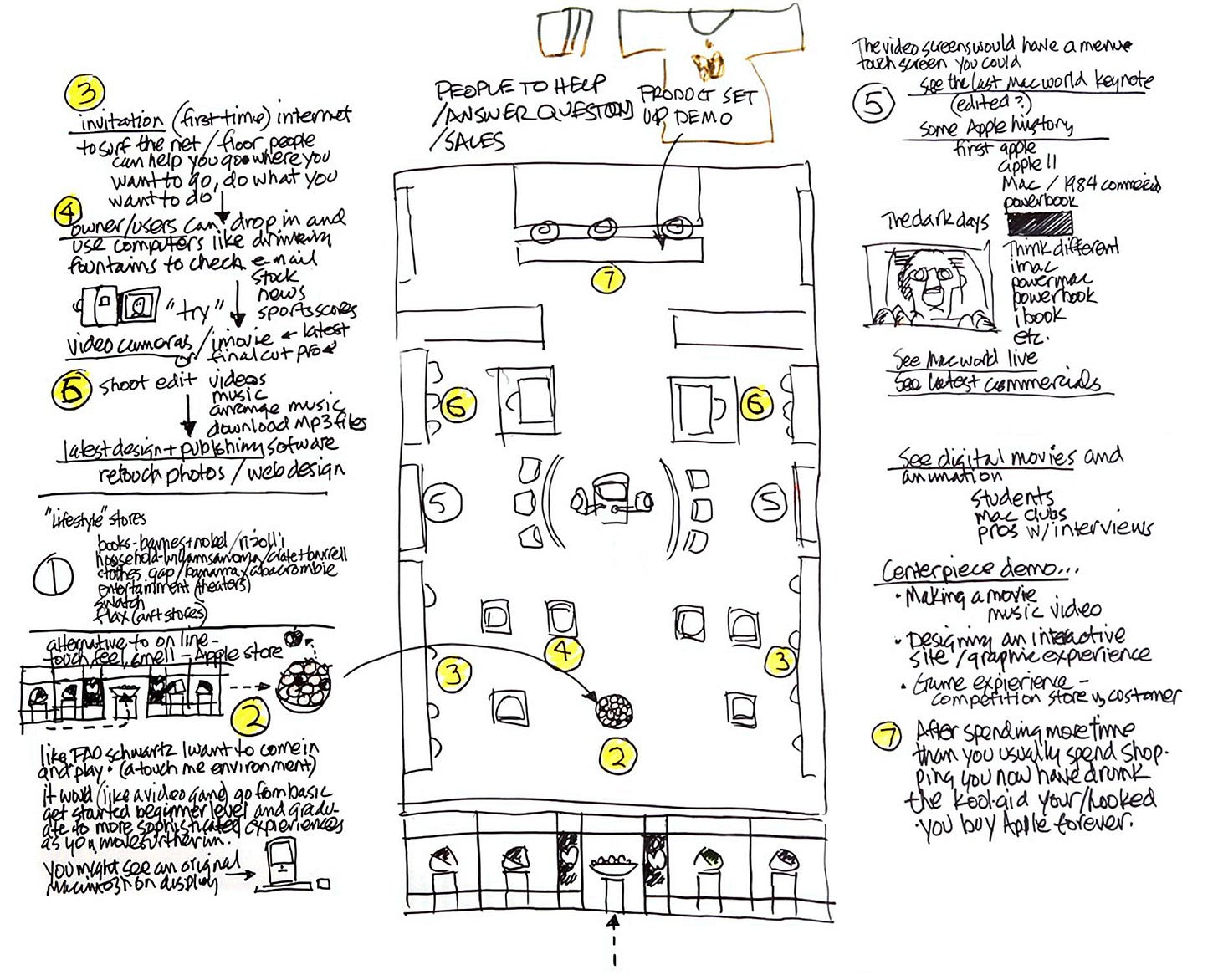Are You the Leader You Want to Be? Are You Sure?
Plus: How Apple created the most successful retail chain anywhere.
What a great response to last week’s issue about Retail & the Metaverse. Thanks for all the positive comments!
This week I am going to dive into one of the most discussed subjects ever, leadership. Hopefully you will find some new and helpful info.
I also want to dig in to the creation of Apple’s retail stores. They are the most productive stores per foot anywhere and the more we can learn about them the better.
Before we do both, a quick reminder about our low cost ad & sponsorship program for businesses who are interested in reaching nearly 8,000 retail decision makers. If you want to learn more, or know anyone that might, please click below:
Finally, if you are a free subscriber to All Things Retail, please consider upgrading to a premium subscription. I am confident that the payback you receive from the 100% access to our weekly content will be immense! Click here to upgrade:
Everyone wants to be a great leader. Many of you may believe you are. Right or wrong, it’s worth vetting what makes a great leader to see if you truly are at that level. If not, the info below will help you set a path for yourself to improve your leadership skills and effectiveness. Either way, keep in mind that most great leaders believe they can and must continually improve. They are never satisfied. We should not be satisfied either!
So, what are the common traits of great leaders?
Great leaders also:
Create or understand the company’s vision and goals, communicate them effectively, and bring them into reality.
Believe in their teams, delegate aggressively, and focus on results.
Have the ability to motivate and inspire others to perform at the highest levels.
Encourage open and honest communication in every direction, and they welcome disagreements as value-added debates.
Drive change and never accept the status quo. They encourage creativity, innovation, and reasonable risk-taking in the workplace.
Never “fail”. They consider what others may call failures as learning experiences and imbed those learnings into their go-forward tactics.
OK, there’s a lot of stuff here. But there is more. While it’s difficult to prioritize certain traits over others, I am going to try! Here are six characteristics that I consider essential for a leader to be considered “great”:
Integrity
Lead with a strong and clear set of values, with honesty and truthfulness. Always make decisions that reflect your values. This leadership consistency will be seen and understood by your team, building powerful levels of respect. Do the right thing, always!
Decisiveness
Firm decisions are necessary in order to keep a business moving forward. Use your experience, team input, and all other information readily available to formulate your point of view and make the decision. “Paralysis by analysis” is a real problem for companies and must be avoided at all costs.
Team Building
Great leaders build and maintain a strong and collaborative team of people working toward the same goals. I have written about this before but unless you can effectively build a team, everything you try to accomplish will be highly challenging. See the “Leaders” column in the picture above or check out “10 Ways to Stop the Employee Exodus”.
Problem Solving
Effective problem solving requires staying calm, identifying issues and potential solutions, and communicating a step-by-step fix. Well developed problem-solving skills will help leaders make quick decisions, eliminate both internal and external obstacles, and ensure projects are completed properly and on time.
Dependability
You are dependable when your team trusts you, relies on your guidance and leadership, knows you will keep your commitments, and is confident that you will always follow through on your plans with clarity, consistency, and great communication. When mistakes occur you will react in an even-keeled, constructive manner focusing on solutions and learning rather than placing blame and outwardly showing your frustration (i.e. yelling & screaming).
Financial Literacy
Much of a leader’s time is spent developing and executing business strategy. By necessity, the related goals will typically be tied to financial performance: profitability, cash flow, and other key metrics. Therefore it’s pretty critical that all business leaders maintain a robust financial literacy. This includes, but is not limited to, financial statement analysis (balance sheet, income statement, cash flow statement), ratio analysis, cash flow management (cash is king!), and forecasting.
So you may be thinking that all of this makes sense, but other than developing my skills in the areas above, do you have any practical tips for how to be a better leader? You bet I do! Take a peek at these 10 tips:
Schedule Time To Think. Take a walk, workout, go for a drive. Whatever you choose, dedicate time in your schedule to thinking. No emails, no calls, no interruptions, just thinking. This will help you organize your thoughts and set goals and develop new ideas which can improve performance and productivity.
Discuss Your Experience and Beliefs During Meetings. Use both group and one-on-one meetings as a forum to help your team get to know you better. They will not only learn from your stories and your experiences, but they will view you in a more positive, personal light which will create stronger bonds.
Change Your Perspective. Home office, store office, or otherwise, the same environment does not stimulate creative thinking. Engage with your team in different locations, be it walking meetings, discussions over lunch (I am a fan of the food court but that’s just me), even a picnic in the park. Just mix it up and you will see the benefit of being in a relaxed setting. New ideas will flow freely!
Focus On Others. Most people care about themselves above all else. It’s human nature. So lead with that in mind. Ask questions, listen carefully to answers and react. Focus on how business initiatives will impact both the individual employee and the team as a group. When people believe their hard work will provide desired results (satisfaction, camaraderie, fun, compensation, etc.), they will step up to the goals and challenges you set for them.
Be Trustworthy. Tell your team that you are all “in this together” and you will always have their back if they have yours. Then walk the talk. When you commit to do something, do it. When a problem arises, work to fix it. When a team member needs support, provide it. Always maintain clear and consistent messaging and communicate aggressively.
Allow Choices. While you are always the ultimate decision maker, allowing your team to choose from predetermined options engages them more deeply and increases their feeling of empowerment. “What should we upsell today?”, “Would you prefer to run a register or be the greeter today?”, and even the innocuous “I am buying the team lunch today. Should we order pizza, sandwiches, or sushi?” will strengthen the bond between you and your team.
Responding To Change. Change is inevitable in every organization. Don’t let changes just dangle out there blowing in the wind. Prepare a detailed plan on how to react, including what steps to take, when to take them, responsible parties, etc. Then tell your entire team the details of the business changes as well as your plan (and the team’s accountability) to react to them.
Shout Out Praise. Everyone loves to hear they did a great job. So work hard to find reasons to praise your team, and when you find them shout them out! Name the team member (or the team as a group), explain what happened, thank them for the effort, and encourage them to keep up the great work. Do all of this in public (remember the old saying, “praise in public and correct in private”) so everyone within earshot can hear it. Do this often!
Say & Write Thank You. Thank every team member every day for their work. Say it sincerely. From time to time go above and beyond and send them a personal thank you note (email is OK, a handwritten note is even better) expressing your gratitude and telling them how happy you are that they are a part of the team. Small efforts often produce huge results!
When It Comes To Your Challenges & Frustrations: Shut Up! Leaders need to exhibit strength and confidence. Nobody at work wants to hear about your frustrations, insecurities and concerns. On the contrary, they want to look up to you as someone that will set the course forward and lead the team navigating that path towards success. Leaders need to lead!
“If your actions inspire others to dream more, learn more, do more and become more, you are a leader.” – John Quincy Adams
“Management is doing things right; leadership is doing the right things.” – Peter F. Drucker
"A true leader has the confidence to stand alone, the courage to make tough decisions, and the compassion to listen to the needs of others. He does not set out to be a leader, but becomes one by the equality of his actions and the integrity of his intent." – Douglas MacArthur
How Apple Built a Retail Empire; The First Step
Apple stores are considered by many to be the best (most productive) retail shops anywhere. Per the NRF, Apple ranks #11 in terms of the largest retailers, and they have accomplished this with only a fraction of the doors as those merchants that rank both above and below them.
So how did Apple accomplish this? Their product selection is obviously great, but others with high ticket offerings (Microsoft, Best Buy) have come nowhere close to Apple’s results. Plus, Apple products are widely available online and in other retail stores.
So how did this magic occur? Let’s explore how it all began.
Back in 1999, Steve Jobs was formulating a theory that Apple should explore entering physical retail. The design firm that has worked with Apple on its colored iMacs, Eight Inc., had been prodding Steve to consider retail and their efforts were gaining traction. Jobs believed the iMac shifted the consumer’s perception of a computer from an appliance to a true consumer product. This lifted his confidence that the same design firm might be able to accomplish the similar results with a retail initiative. Flagship stores were a path towards helping the Apple brand and messaging stand out even further from the competition. The decision was made to move forward.
Jobs is appropriately considered a product genius by many. Yet when it came to retail, he had no specific vision for what the stores should look and feel like. The design effort actually began on a whiteboard!
The initial design process was very typical, from the use of bubble diagrams to sketches, concept renderings and small-scale models. Changes happened frequently as Jobs and team considered various options. When something “felt like Apple”, it stayed. In the end, the team was guided by the need to express what Apple’s core values were about. The idea of “making technology human” became the driving force for the design.
The store had to be easy to use as well as comfortable and inviting. The designers worked to ensure the space was open and intuitive. While Jobs wanted associates who knew technology but also put forth a human element. The balance of tech-savvy people who were engaging and warm was critical. The design of the store had to reflect those same attributes.
Keep reading with a 7-day free trial
Subscribe to All Things Retail to keep reading this post and get 7 days of free access to the full post archives.








